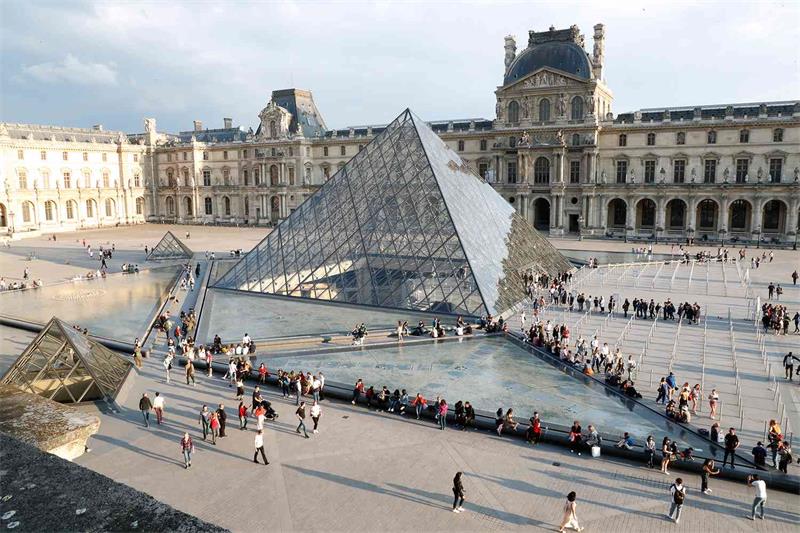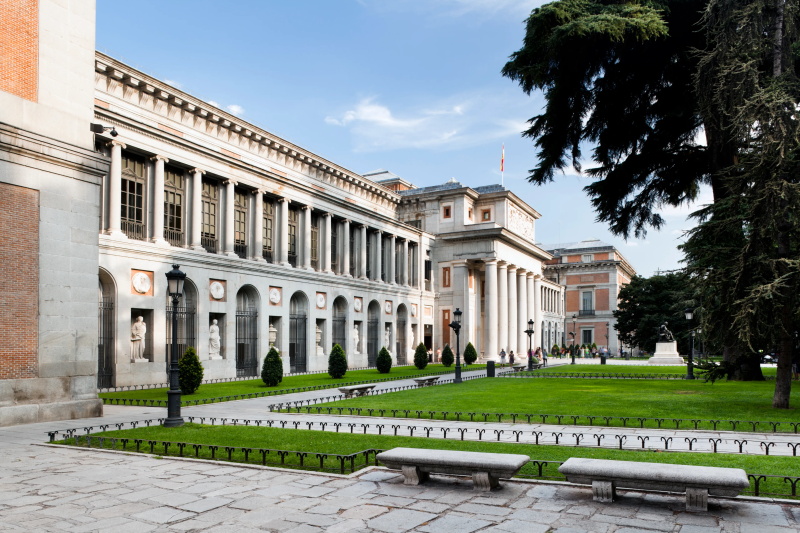Contents
The Art Scene and Museums of Paris: A Cultural Haven to Explore
Paris, also known as the City of Light, is widely celebrated for its stunning architecture, delicious cuisine and romantic ambiance. But beyond the picturesque streets and charming cafés, Paris has a rich history as a hub for art and culture. From the historic Louvre Museum to contemporary exhibits at Centre Pompidou, Paris offers visitors an abundance of opportunities to immerse themselves in the world of art.
A Brief Overview of Paris as a Hub for Art and Culture
Dating back to the 19th century when artists such as Monet, Renoir, and Degas began flocking to Paris in search of inspiration, the city has played a significant role in shaping some of the most notable movements in art history. From Impressionism to Surrealism, Cubism to Fauvism – many of these movements originated in or were heavily influenced by Parisian artists. Today, Paris continues to be home to some of the most renowned museums and galleries in the world.
Visitors can explore classic masterpieces at The Louvre Museum or discover modern works at Musée d’Orsay or Centre Pompidou. Street art enthusiasts will also delight in discovering hidden gems scattered throughout vibrant neighborhoods like Belleville or Canal Saint-Martin.
The Importance of Exploring Paris’ Art Scene and Museums
Exploring Paris’ art scene is not only an opportunity for visitors to view some of the world’s most celebrated artworks – it’s also an opportunity for cultural immersion and education. Engaging with art can help us gain new perspectives on life while expanding our understanding of different cultures. Moreover, visiting museums can be therapeutic too!
Studies have shown that engaging with visual arts can significantly reduce stress levels while enhancing memory retention abilities. So whether you’re keen on exploring classic pieces from centuries past or contemporary works from emerging artists, Paris’ art scene is sure to offer something for everyone.
The Louvre Museum
History and significance of the Louvre Museum
The Louvre Museum is without a doubt one of the most popular and well-known museums in the world. Originally built as a fortress in the 12th century, it was converted into a palace during the 16th century.
The museum’s collection began in 1793, after the French Revolution, when works from royal collections were confiscated and declared property of the people. Today, the museum is home to over 35,000 objects ranging from ancient artifacts to contemporary art.
The significance of the Louvre Museum goes far beyond just its collections. It is a symbol of French culture and a testament to human creativity.
The museum’s architecture alone is awe-inspiring, with its iconic glass pyramid entrance created by Chinese-American architect I.M. Pei. The Louvre has also been featured in countless films and books, cementing its place as an international cultural icon.
Must-see exhibits and artworks
With such an extensive collection, it can be overwhelming trying to decide what to see at the Louvre Museum. Some must-see exhibits include antiquities from ancient Egypt, Greece and Rome; decorative arts such as furniture and tapestries; European paintings from artists including Leonardo da Vinci’s “Mona Lisa” and Eugène Delacroix’s “Liberty Leading the People.” One particularly interesting section of the museum is dedicated to Napoleon Bonaparte’s personal apartments that provide insight into his life as France’s emperor during the early 19th century.
Tips for navigating the museum
Navigating through such an enormous space can be daunting but there are some tips that can make your experience more enjoyable. Firstly, purchase tickets in advance or consider getting a Paris Pass that includes admission into many popular attractions throughout Paris including skip-the-line entry to the Louvre. Secondly, it’s recommended to plan your route ahead of time to avoid getting lost or overwhelmed.
The museum provides maps and audio guides that can also be helpful. Be sure to wear comfortable shoes and take breaks throughout the day as it’s easy to get tired and spend hours exploring just one section.
Musée d’Orsay
Overview of the Musée d’Orsay’s Collection
The Musée d’Orsay is one of the most popular and unique museums in Paris. Located on the Left Bank of the Seine River, it is housed in a former railway station and showcases art from 1848 to 1914.
The museum’s collection includes paintings, sculptures, decorative arts, photography, and more. Visitors can enjoy works by famous artists such as Van Gogh, Monet, Renoir, Cézanne, Degas and Gauguin.
One of the reasons why the collection at Musée d’Orsay is so special is because it focuses on a specific time period – from the mid-19th century to World War I – that saw some of the most revolutionary changes in art history. The museum features artwork from movements such as Impressionism, Post-Impressionism and Art Nouveau.
Famous Artists and Artworks on Display
There are many famous artworks on display at Musée d’Orsay that are worth seeing during a visit to Paris. One example is Vincent Van Gogh’s “Starry Night Over the Rhone,” which depicts a night scene by a river with beautiful blue starry skies – simply breathtaking!
Another highlight is “Luncheon on the Grass” by Edouard Manet which portrays people having lunch in an outdoor setting; it was once considered scandalous due to its controversial nudity. Other prominent works include Gustave Courbet’s “The Origin of the World”, which caused quite a stir when it was first exhibited due to its explicit imagery of female genitalia; Claude Monet’s Water Lilies series which captures his fascination with light reflections on water; and Auguste Rodin’s “The Kiss,” one of his most famous sculptures, depicting a couple in an embrace.
Unique Features of the Museum
The Musée d’Orsay’s unique architecture adds to the charm of the museum. The former railway station was transformed into a museum in 1986 and features a grand hall with a glass roof that allows natural light to illuminate the gallery.
Visitors can also take in stunning views of Paris through large clocks on either side of the building that offer panoramic vistas of the city. Another feature that sets this museum apart from others is its collection of decorative arts.
From furniture to jewelry and more, these pieces provide insight into everyday life during the time period represented by the museum’s art collection. So if you’re looking for something different and want to explore more than just paintings and sculptures, be sure not to miss this section!
Centre Pompidou
Modern Art at its Finest: An Introduction to Centre Pompidou
If you’re looking for a museum that’s a little bit edgy, then Centre Pompidou is the perfect place for you. Opened in 1977, it’s Europe’s largest modern art museum and its multidisciplinary approach means that it houses all sorts of contemporary art forms.
From visual arts to photography, cinema to dance, design to architecture – there’s something for everyone here. One of the things that makes Centre Pompidou so special is its unique design.
The building was designed by architects Renzo Piano and Richard Rogers and it has been described as “inside-out” because all of the building’s mechanical systems are located on the outside. This leaves more room for exhibition space inside and also gives visitors a great view of Paris from the top floor.
Exhibitions That Are Worth Checking Out
Centre Pompidou is home to some incredible exhibitions throughout the year. One exhibition that stands out is “Global(e) Resistance”, which explores how artists have responded to political and social changes over time.
It includes works by artists such as Ai Weiwei, Jenny Holzer, and Alfredo Jaar. Another exhibition worth checking out is “Beat Generation”, which focuses on the cultural movement that began in New York City in the 1950s.
It features works by artists such as Jack Kerouac, William S Burroughs, Allen Ginsberg, and Robert Rauschenberg. If you’re interested in contemporary art or just want to see something new and different, then Centre Pompidou has got you covered!
A Look into Its Architecture
As mentioned before, one of the most unique features of Centre Pompidou is its design which makes it an architectural landmark in Paris. It’s a huge building and its brightly coloured tubes, escalators and transparent elevators give it a futuristic look that’s unmistakable. But it’s not just about the exterior – the interior is also very impressive.
The grand hall with its huge windows, high ceilings and natural light is breathtaking. And there are plenty of other interesting spaces to discover too, such as the rooftop terrace which offers panoramic views of Paris.
All in all, Centre Pompidou is a must-visit for anyone interested in modern art or architecture. It’s an incredible space that combines art, culture and design in a way that’s both visually stunning and intellectually stimulating.
Street Art in Paris
The Rise of Street Art in Paris
Paris may be home to some of the most famous museums and art galleries in the world, but it’s also a city that has embraced street art. Over the past decade, street artists from around the world have flocked to Paris, transforming its walls and buildings into canvases for their vibrant and thought-provoking creations.
From colorful murals to striking stencils, there’s no shortage of street art to discover. One factor contributing to the rise of street art in Paris is its rich history of political activism.
Street art has long been a platform for artists to express their political views and critique societal issues. In recent years, this tradition has continued with themes ranging from environmentalism and social justice to anti-capitalism and immigration.
Where to Find Some of The Best Street Art in Paris
Paris may be a large city, but it’s relatively easy to explore on foot or by bike. One way to discover some of its best street art is simply by wandering through its various neighborhoods. The 13th arrondissement is particularly well-known for its vibrant murals, while Belleville is home to some excellent graffiti.
Another option is taking a guided tour led by locals who are passionate about street art. These tours offer an opportunity not only to see great pieces but also learn about their meaning and cultural significance.
Visiting le MUR Oberkampf should be on any serious fan’s itinerary. It’s a wall space in the 11th arrondissement where new artworks are featured every two weeks.
Famous Street Artists Who Have Made Their Mark on The City
Several famous street artists have left their mark on Paris over the years. One such artist is JR who became famous thanks his oversized black-and-white photographs covering entire facades of buildings. Another is Invader who has placed his pixelated mosaic art in more than 60 cities globally and Paris has more than 1,000 pieces.
Banksy, one of the world’s most recognizable street artists, started making a name for himself in Paris in the early 2000s. His work graces various locations around the city including the famous Centre Pompidou and Canal St Martin.
All in all, exploring Paris’s vibrant street art scene is an experience that’s not to be missed. The city may be over eight centuries old, but its walls are teeming with creativity and artistic expression that will leave any visitor awestruck.
Lesser-Known Museums in Paris
When most people think of museums in Paris, they think of the Louvre and the Musée d’Orsay. However, there are plenty of lesser-known museums around the city that are definitely worth a visit. These museums offer unique collections and exhibits that you won’t find anywhere else, making them hidden gems for art lovers.
Hidden Gems: Lesser-Known Museums Worth Visiting
One such hidden gem is the Musée de la Chasse et de la Nature, which is dedicated to hunting and nature. It may not be everyone’s cup of tea, but it’s worth a visit just for its impressive collection of taxidermy animals that are displayed in naturalistic dioramas.
The museum also features artwork depicting hunting scenes throughout history. Another lesser-known museum worth visiting is the Musée de Montmartre.
Located in the charming Montmartre neighborhood, this museum explores the artistic history of the area with exhibits featuring famous artists like Toulouse-Lautrec and Modigliani. The museum is housed in an old mansion with a lovely garden that offers stunning views over Paris.
Unusual Collections That Are Unique to Each Museum
The Musée du Vin (Wine Museum) is another unique museum that visitors should consider adding to their itinerary. Located in a 15th-century cellar near the Eiffel Tower, this museum explores France’s rich wine-making heritage through interactive exhibits and tastings.
Visitors can learn about different grape varieties and wine-making techniques while sampling some delicious wines from various regions across France. For those interested in Asian art, the Guimet Museum should be on your list.
This museum boasts one of the largest collections of Asian art outside Asia itself and features artifacts from China, Japan, India, Southeast Asia, and more. From intricate sculptures to delicate ceramics and textiles, the museum has something for everyone interested in Asian art.
Tips for Discovering Off-the-Beaten-Path Museums
When it comes to discovering these lesser-known museums in Paris, there are a few tips that can help you find the hidden gems. First, do your research ahead of time and make a list of the museums you want to visit.
Check out online reviews and recommendations to get a sense of what each museum offers. Another tip is to explore different neighborhoods around the city.
Some of the best museums are located in less-touristy areas that are off the beaten path. You never know what hidden gem you might stumble upon while wandering around Paris.
Don’t be afraid to ask locals for their recommendations. They may know about some lesser-known museums that aren’t as well known to tourists but are definitely worth a visit.
Plus, it’s always great to get insider tips from locals who know the city well. While the Louvre and Musée d’Orsay are certainly must-see museums in Paris, there are plenty of other hidden gems around the city waiting to be discovered.
From taxidermy animals and wine tastings to Asian art and artistic neighborhoods, these lesser-known museums offer unique experiences that you won’t find anywhere else. So next time you’re in Paris, be sure to explore beyond the typical tourist attractions and discover these hidden gems for yourself!
Conclusion
Exploring the art scene and museums of Paris is a must-do activity for anyone visiting this beautiful city. With its rich history and vibrant culture, Paris has something to offer everyone, from classical art lovers to modern art enthusiasts and even street art aficionados. The Louvre Museum is one of the world’s most famous museums, home to some of the most iconic artworks in history.
From the Mona Lisa to the Winged Victory of Samothrace, there are so many treasures waiting to be discovered. The Musée d’Orsay is another must-visit museum in Paris.
It’s home to an impressive collection of Impressionist and Post-Impressionist paintings, including works by van Gogh, Monet, and Degas. The museum itself is also a work of art; it’s housed in a former train station that has been beautifully transformed into a stunning museum space.
If you’re interested in modern art, then Centre Pompidou should definitely be on your list. This unique building houses one of the largest collections of modern and contemporary art in Europe, including works by Picasso, Matisse, and Warhol.
You can also enjoy stunning views over Paris from its rooftop terrace. In addition to these world-famous museums, there are many lesser-known museums worth exploring in Paris.
These hidden gems offer unique collections that you won’t find anywhere else in the world. Whether you’re interested in decorative arts or ancient manuscripts or even taxidermy (yes, really!), there’s something for everyone.
Overall exploring Paris’ vast array of art scenes will leave you with unforgettable experiences that will last a lifetime. Not only will you discover some incredible art treasures but it will also immerse yourself into France’s culture which is known for its deep appreciation for arts & creativity.
So if you’re planning a trip to Paris anytime soon – don’t forget to add exploring its art scene and museums to your itinerary. You won’t regret it!













